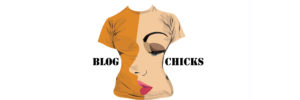If the 1st exhibition of the twice yearly / 5 year partnership of Anna Schwartz and Carriageworks (Director, Lisa Havilah) is anything to go by, then we’re in for some serious treats.
El Anatsui Five Decades is the first exhibition in this partnership and is a must see. This is a significant survey exhibition of work by this highly acclaimed artist spanning a career of 50 years which, in itself, is something to celebrate. A lot has already been posted about this work since it opened for the Sydney Festival, and here are my impressions to add to the mix.
This example of a public-private partnership combines vision, imagination, risk and dollars to bring to fruition on such an ambitious scale, an exhibition of an artist who is not well known in Australia. That doesn’t happen very often. Public institutions prefer tried and true. Private dealers seek a commercial return.
The financial arrangement between Schwartz and Carriageworks is described as a $500,000 over a 5 year period, to present 2 exhibitions annually. This is a particularly generous contribution from Schwartz and would include, in addition to the money, networks and knowledge. I imagine the financial commitment from Carriageworks would be even more significant (given what we’ve seen thus far – a very big show, requiring a very big budget to bring it from the other side of the world) and a commitment, which no doubt, must be maintained for the agreed 5 year period.
The 2nd Schwartz-supported exhibition is not yet listed (unless I’ve missed it somewhere, please let me know) but the rest of the 2016 Carriageworks program is out and it is exciting. It is edgy, diverse, provocative, challenging and tasty: Sydneysiders are indeed fortunate to be invited on such a stimulating journey.
Here’s hoping, with more support, from many pockets, this ambition can be sustained.
Back to El Anatsui Five Decades …..

El Anatsui Tiled flower garden 2012. aluminium & copper wire. Image courtesy the artist, Jack Shainman Gallery and Carriageworks, Sydney

El Anatsui Tiled flower garden 2012, detail. aluminium and copper wire. Image courtesy the artist, Jack Shainman Gallery and Carriageworks, Sydney
Originally presented as a survey exhibition by his commercial NY based art dealer Jack Shainman to celebrate the 1st anniversary of Shainman’s secondary space, The School, Five Decades also celebrates El Anatsui’s esteemed place on the international stage of contemporary art, having just been awarded the Golden Lion at the 2015 Venice Biennale. (The Golden Lion is for Lifetime Achievement and is the Venice Biennale’s highest honour.)
Just as an aside, Shainman’s The School is interesting: literally an old disused school, in Kinderhook upstate NY Shainman bought it and thoroughly transformed it – think geothermal heating/ cooling systems and lowering of floors – into an extraordinary contemporary gallery space with the specific focus: “to exhibit, represent and champion artists from around the world, in particular artists from Africa, East Asia, and North America.” Another destination to add to the itinerary when mapping out a north-east USA cultural tour.
The experience of this exhibition as a whole is unforgettable. The sheer scope of the works, in both their oversize scale and minute detail, takes your breath away. El Anatsui uses simple materials, generally discarded rubbish, which is stitched, folded, crumpled and fused together, to create large scale sculptural works that take on a topography of staggering proportion.

El Anatsui Trains of thought 2011 aluminium and copper wire (a different configuration from Carriageworks)

El Anatsui Train of thought 2011 detail aluminium and copper wire. Image courtesy the artist, Jack Shainman Gallery and Carriageworks, Sydney
The most recent, and perhaps most impressive works, are those created from bottle tops (mostly alcohol bottle tops), the metal bits that fold around the neck of the bottle, that here are usually printed paper (I’m sure they have a discrete name) copper wire and aluminium can lids. For Anatsui, his choice of medium is partly the physical, tactile nature of the material itself – the colour, the patterns, the pliability, the endless supply – which allows him to create something between a sculpture and a painting. Crucial is also what the materials represent: the currency of alcohol is embedded in the colonial, trading and human rights histories of the African, European and American continents and continues to be so.
Anatsui likes the human factor of the materials. Though mass produced, each item has been touched by many human hands in the many stages of handling before it ends up in the recycling stations – something Anatsui likes to contemplate as he sorts, flattens, cuts and stitches the pieces into something magnificent.
Nothing is tied too tightly, nothing stitched too perfectly. There are lumps and bumps, creases and wrinkles which shift each time someone handles the work, or hangs it on the wall. So the works float and drape across the wall like fabric and fall down to the floors, nothing sitting perfectly flat or straight.

El Anatsui Garden Wall 2011 aluminium & copper wire. Image courtesy the artist and Jack Shainman Gallery
Anatsui wants a freedom in his works, to change each time they are presented. He wants to encourage a sense of play with the curators to configure their own topographies as they hang the works for a public audience.
Garden Wall 2011 drapes and bends against the wall and glides down and across the floor, glimmering in the light; such humble materials create something akin to a cloth of shimmering gold. I have got a little carried away here but, on a sunny day, it is magical.

El Anatsui Drainpipe 2010 aluminium & copper wire. Image courtesy the artist, Jack Shainman Gallery and Carriageworks, Sydney
El Anatsui uses the term ‘gawu’ to describe this body of work. It is derived from Ewe, his native language and has several potential meanings, including ‘metal’ and ‘a fashioned cloak’. Gawu becomes a term which, for Anatsui, encapsulates the medium, the process and the resulting work. For further insight, see here for an interesting article.
Of similar humility and political intent, but without the glam, are the small wooden people, carved with a power-saw from chunks of wood (again discarded) with scars and cuts, Anatsui’s metaphor for the scars left behind by the European colonial encounter with Africa.

El Anatsui Devotees 1987 wood. Image courtesy the artist, Jack Shainman Gallery and Carriageworks Sydney

El Anatsui Group Photo 1987 wood. Image courtesy the artist, Jack Shainman Gallery and Carriageworks Sydney
There’s the sprawling floor assemblage Open(ing) Market with some 1700 small boxes, all open, with labels of household products pasted on the inside, evoking the visual mayhem and trading patterns of any African market overrun with imported products.
Another large scale floor piece, is made up of molded scrap aluminium printing sheets, most still bearing typeset obituaries, refashioned into Waste Paper Bags, oversized and unusable ‘for unknown waste, covered with the tributes to individual lives.’ (Carriageworks extended label – the labels are generally very informative).

El Anatsui Waste paper bags 2004-10, installation view. printed aluminium plate and copper wire. Images courtesy the artist, Jack Shainman Gallery and Carriageworks, Sydney

El Anatsui Waste paper bags. printed aluminium plates & copper wire. Image courtesy the artist, Jack Shainman Gallery and Carriageworks, Sydney
His earliest work is his ceramic pots, of which there are some wonderful examples here. These objects are as commanding and intriguing as the largest of the metal ‘fabrics’. Ceramics is where he started his artistic search: researching and analysing local artefacts and traditions, and experimenting with new ways in which to assert his political aesthetic. He blended Nigerian clay with a mix of traditional broken pots and manganese from his Ghanaian home, all three of which are the key sources of his inspiration.

El Anatsui Gbeze 1979 manganese. Image courtesy the artist, Jack Shainman Gallery and Carriageworks, Sydney

El Anatsui Chamber of memory 1977. ceramic & manganese. Image courtesy the artist, Jack Shainman Gallery and Carriageworks Sydney
On firing, the manganese turns dark and with its black flecks became for Anatsui, representative of black Africans. In west Africa pots are essential household items which are discarded when broken. Anatsui deliberately broke his pots apart, reused them and then reformed them. In doing so, they became a symbol of renewal and transition. Anatsui maintains , “destruction and decay are a path to renewal”
If you were walking The Highline in NYC in winter of 2012/ 2013 you would have enjoyed one his more recent works – again on a huge scale – a large sculpture on one of the outer lying building walls which frame the walkway. Originally shown in Paris during the 2012 Triennale, Broken Bridge wrapped around an entire side of the Musée Galliera at the Musée de la Mode de la Ville. For New York, the work was reconfigured by the artist (and team) for the Highline location. Both sites make for an outdoor installation of great visual impact.
Made of recycled pressed tin and mirrors woven together, Broken Bridge II creates a stunning visual of wave-like patterns and folds, evoking traditional practices of tapestry weaving, while reflecting the surrounding landscape of the Highline. Anatsui talks of “bringing in the sky”, something which is boundless at home but which, in NYC, is diminished by the mass of tall buildings.

El Anatsui Broken Bridge II. iron plates & mirror. The Highline, NYC. Winter 2012/ 13. Image courtesy the artist, Jack Shainman Gallery and The Highline
Whilst we have had a taste of his work before in Australia – at the 18th Biennale of Sydney in 2012 – most of us haven’t had the opportunity to absorb the full extent of his artistic prowess. This is a great opportunity to do just that.
On until 6 March.










No Comments Yet